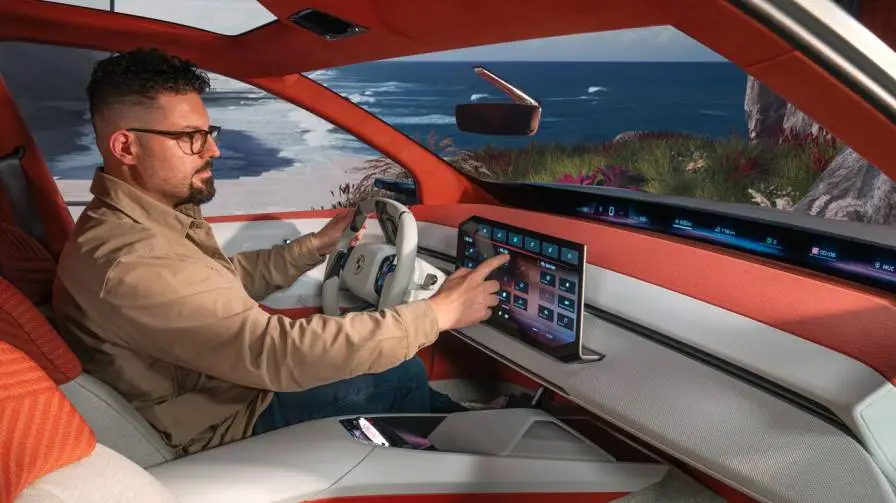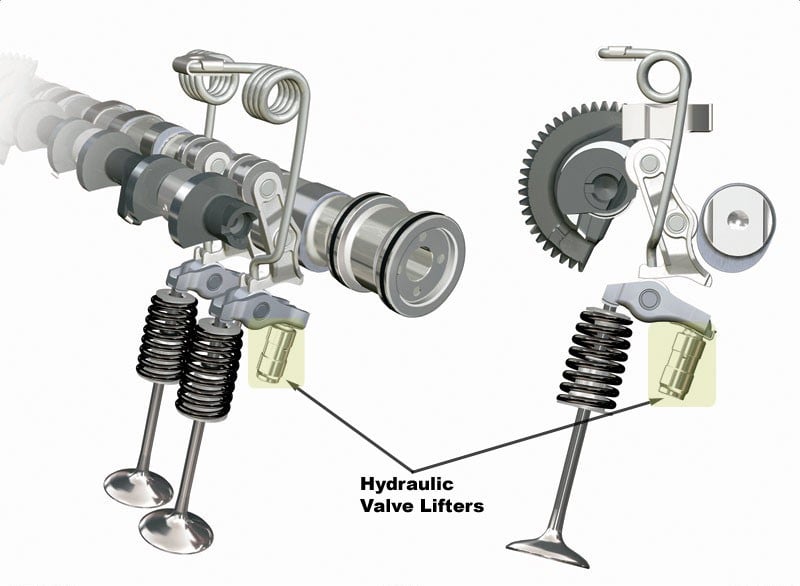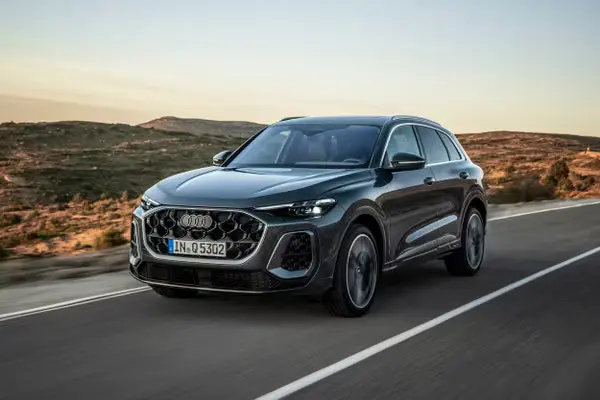BMW i4 vs Tesla Model 3 – Which is Better?
With the death of the internal combustion engine looming on the horizon, it is no secret that most current wheels manufacturers are trying to strike early with some new hard-hitting models, BMW included. While Tesla jumped in throne first, dedicating all of their resources to their electric vehicle endeavors, BMW has obviously been splitting their sustentation towards multiple variegated segments.
As a result, it is well-spoken that BMW has been fighting a losing wrestle on the EV front since they released their first mass-produced EV, the BMW i3, in 2013. The numbers when that up, with the Tesla Model 3 selling over 645,000 units over its production so far compared to the 191,000 BMW i3s sold since it was released. However, BMW has learned a thing or two well-nigh EVs since 2013, leading to the introduction of increasingly purely electric vehicles in their fleet, one of them stuff the i4 which released in 2021.
While the i3 served as BMW’s EV entry in the interim, the i4 is a much largest benchmark to compare to other medium size EV offerings from other competitors, including the Tesla Model 3. It moreover joins BMW’s other current EV offerings, including the iX, i7, and i5. In this article, we’ll provide a full BMW i4 vs Tesla Model 3 comparison, looking at every speciality of both models from their exterior styling to their range and overall performance.

BMW i4 vs Tesla Model 3 Overview
Both the BMW i4 and Tesla Model 3 are misogynist in a number of variegated trim levels, with the i4 offered in 4 variegated tiers and the Model 3 offered in 3. Both models are offered with either a single-motor rear-wheel drivetrain or a dual-motor all-wheel drivetrain depending on your needs. The Model 3 is the less expensive of the two models with the wiring price of the Model 3 RWD at $40,240 compared to the i4 eDrive35 which starts at $53,195. While the wiring i4 has a larger 66 kWh shower than the respective Model 3, the higher-tier Model 3s have a slight whet in shower size at 82 kWh.
Ultimately, the Model 3 and i4 whet each other out in variegated areas. The Model 3 has superior range to the i4 thanks to Tesla’s headstart in the shower minutiae field, although the i4 isn’t trailing too far behind. While the Model 3 accelerates faster, the i4 has the whet in terms of cornering and handling. While both cars have good build quality overall, the i4 is truly the only one that can be tabbed a true luxury car, built with higher quality materials and with a largest fit and finish.
BMW i4 vs Tesla Model 3 Trim Levels
If deciding whether a BMW i4 or Tesla Model 3 was once overwhelming, now it’s time to introduce plane increasingly factors. The i4 and Model 3 are offered in several variegated performance trim levels that introduce spare standard features, range, and overall performance. In total, the i4 is offered in 4 variegated trim levels, while the Model 3 is offered in 3.
BMW i4 Trim Levels
The four BMW i4 trim levels are tabbed the eDrive35, eDrive40, xDrive40, and M50. With increasingly options to segregate from, the BMW i4 provides increasingly variety than the Model 3. However, the first few i4 trim levels are pretty comparable to the wiring Model 3 trim levels. As is the norm with BMW nomenclature, all of the eDrive models represent rear-wheel momentum options, while all of the xDrive models represent all-wheel momentum models.
The i4 eDrive35 is the entry model into the i4 line and unsurprisingly comes equipped with the lowest output 66 kWh battery, the least standard features, and the shortest range. It is moreover rear-wheel drive, so it might not be the weightier option for those that live in fluid climates.

The next step up is the i4 eDrive40, which introduces a larger 81 kWh battery, increasingly horsepower, and increasingly range. Following that is the i4 xDrive40, which features the same overall equipment as the eDrive40 but adds an spare front motor and BMW’s xDrive all-wheel momentum system to the mix.
The final trim is the untamed i4 M50. The i4 M50 is quite the step up from either of the prior models, with an $8,000 discrepancy between it and the xDrive40. However, that money is going towards pure performance. The M50 is the M-variant of the i4, equipped with 536 horsepower supplied by both the front and rear wheels. We’ll talk increasingly well-nigh the M50’s performance in a later section.
Most i4 buyers will find a nice middle ground in the eDrive40, given that you can live without all-wheel drive. With a wiring price of $58,295 and a respectable 301 miles of range, the eDrive40 is our recommendation for the weightier i4 trim level.
Tesla Model 3 Trim Levels
Tesla used a less clinical naming scheme for the Model 3 variants, with the three models tabbed the Rear Wheel Drive, Long Range, and Performance. In the Tesla lineup, expectedly, the Rear Wheel Momentum model is exactly that: rear-wheel drive. All of the other models are powered by two electric motors, driving both the front and rear axles.
The Model 3 Rear Wheel Momentum is a very tempting option, given that it is insanely affordable with its $40,240 MSRP. The Model 3 RWD moreover puts some respectable figures on the board, providing 272 miles of range and a 5.8 second 0-60 time. However, it moreover has the smallest shower on this list and the least power.
Moving on from there, the next Model 3 tier is the Model 3 Long Range, which was specially designed to succeed what its name entails, and proffer the drivable range of the wiring Model 3. With a larger 82 kWh battery, the Long Range ups the loftiness that you can imbricate on one tuition to 333 miles. That makes it one of the furthest-range EVs currently on the market.

Rounding out the Model 3 lineup is the Model 3 Performance and there’s certainly no shortage of it here. With 450 horsepower on tap from a dual-motor all-wheel momentum system, the Model 3 Performance can catapult itself from 0-60mph in 3.1 seconds. It doesn’t sacrifice much range doing so either, as it can still take you 315 miles on a single charge.
The Model 3 Long Range is our no-brainer pick when it comes to Model 3 trims. Range uneasiness is very real, so it only makes sense to go with one of the longest-range EVs on the market. Its inclusion of AWD doesn’t hurt either.
BMW i4 vs Tesla Model 3 Interior
Ultimately, the i4 and Tesla Model 3 have very variegated approaches to interior design. If we’re stuff honest, Tesla’s build quality has never been anything to write home about. As a result, interior diamond is definitely an zone where the i4 shines.
Tesla Model 3 Interior
In terms of the overall squint of both interiors, it is well-spoken that Tesla took a far increasingly minimalist approach. Upon stepping into a Model 3, you’ll notice one thing, there isn’t much in there. The main standout full-length of the Model 3’s interior is the massive 15.4” touchscreen mounted centrally on the soupcon between the suburbanite and passenger. We’ll go into remoter detail well-nigh the screen later, but it acts as the inside tenancy hub for nearly all of the Model 3’s features.

Other than the screen, there is seating for 4 normal-sized adults and an spare seat for someone to squeeze into. Inferior build materials are truly what let the Model 3 lanugo in the interior department. That isn’t particularly surprising, given that the wiring model Model 3’s MSRP is over $13,000 less than the i4’s wiring model. As a result, the Model 3’s interior materials are good but not premium. Many Model 3 owners have complained well-nigh their vegan leather seats and steering wheels degrading quickly, expressly when exposed to heat.
BMW i4 Interior
It’s no secret that BMW has been killing the interior game for quite some time now and the i4 is no exception. As with most of the current BMW lineup, the i4’s interior is a true representation of luxury, well-constructed with leather seats, a new 14.9” wraparound display, brushed aluminum accents, and satisfying tactile buttons. The i4 shares scrutinizingly all of its interior details with the gas-powered BMW 4-Series, which has been praised for its sustentation to detail as far as its interior diamond is concerned.

Like the Tesla Model 3, the i4 has zaftig seating for four adults, and a inside seat in the rear is really only suited for a kid. The coupe-like roofline can be a bit challenging for taller rear passengers, providing only 36.6 inches of headroom. Most of the i4’s spare length goes towards supplying the massive trunk with increasingly space. The i4 has 16.6 cubic feet of cargo space overdue its rear seats and 45.6 cubic feet of total cargo volume with the rear seats folded down, which is increasingly than plenty for an EV coupe.
BMW i4 vs Tesla Model 3 Exterior Styling
Obviously, exterior styling is completely subjective, but that doesn’t midpoint that it isn’t an important factor in choosing between the BMW i4 and the Tesla Model 3. Both cars stick to the overall styling mantras of their respective manufacturers.
Whether you like it or not, the i4 aligns with BMW’s most recent styling ideology. In fact, its visual visitation is nearly identical to the new gasoline-powered BMW 4-Series on which it is based. That is unconfined news for some and terrible news for others, as the redesigned 4-Series (released in 2021), was quite polarizing. The i4 features the gaping kidney grilles that have been so wontedly debated over the past couple of years. Outside of the front facia, the i4 is nearly identical to the 4-Series Gran Coupe, well-constructed with four doors and a hatchback.
While BMW’s diamond language is unquestionably increasingly iconic, Tesla has built up quite a bit of trademark recognition in recent years as well. The Model 3 is immediately recognizable as a Tesla thanks to its bug-eyed headlights and uninterrupted glass roofline. While the i4’s front grilles are the most notable full-length of its exterior design, in contrast, the Model 3 doesn’t full-length any air inlets at all. Ultimately, the Model 3 is the safer, if not increasingly predictable, nomination from an exterior diamond perspective.
Both cars are pretty comparable in terms of exterior dimensions. The i4 is the longer car by a significant margin, coming in at 189” compared to the Model 3’s 184.8”. While the i4 is the longer car, the Model 3 is the (much) taller car at a towering 73.” While height isn’t a huge factor, it does make the Model 3 squint a bit out of proportion.
BMW i4 vs Tesla Model 3 Performance
Performance can be specified in a couple of ways with the Model 3 excelling in some areas and the i4 taking the confection in others. Let’s squint at pure velocity and 0-60 times first, as that unchangingly seems to be the speciality of interest as far as EV performance is concerned. Then we’ll move onto the arguably increasingly important topic of handling and on-road comfort.
i4 vs Model 3 0-60 Times
At the lower end of the trim-level totem pole, the i4 and Model 3 are pretty evenly matched, with both the i4 and Model 3 RWD progressive to 60mph in 5.8 seconds. Moving up a tier, the Model 3 has a well-spoken advantage. In comparison to the i4 eDrive40’s 5.4 second 0-60, the Model 3 Long Range will get there 1.2 seconds faster at 4.2 seconds. That’s a pretty serious discrepancy. While 5.4 seconds is quick, 4.2 seconds is downright fast.
After the second tier of both the i4 and Model 3, things start to get truly serious. Since the i4 has four tiers while the Model 3 only has three trim levels, there is no uncontrived comparison to the i4 xDrive40. With that stuff said, the xDrive40 still doesn’t provide an wordplay to the Long Range.
However, moving on to the highest tier of both models, we see some pretty neck-breaking performance. The highest-tier 536 horsepower i4 M50 has a 0-60 time of 3.3 seconds, which is 0.5 seconds faster than a non-xDrive 2023 M3 Competition. In fact, there are truly only a handful of cars on sale today that can match that kind of performance. While the i4 M50 is unquestionably impressive, the Model 3 Performance tops it with a nearly incomprehensible 3.1 second 0-60 time. To put that in perspective, the Model 3 Performance is 0.1 seconds faster to 60mph than a Ferrari Enzo.
While you won’t likely be bringing either of these cars to the stilt strip unendingly soon, it is still a fun metric to measure. Ultimately the Model 3 wins out here, which shouldn’t be too surprising given Tesla’s reputation for stuff quick off the line.
i4 vs Model 3 Handling and Comfort
With the not-so-practical performance benchmark out of the way, let’s talk well-nigh a performance speciality that you will notice on the day-to-day. Handling isn’t just a foible that you notice on the racetrack, it is something that impacts the driving wits as a whole. And, it should be no surprise that BMW truly knows what they are doing in that department. While Tesla might have the whet in terms of shower technology, they don’t have anywhere near the same pedigree when it comes to towers a well-performing car virtually it.
The i4 comes with the chassis dynamics that you’d expect from a modern BMW. Due to the i4’s lower overall height, its part-way of gravity is kept as low as possible, benefiting turn-in performance and overall cornering ability. Both the eDrive40 and xDrive40 can be fitted with optional M-Adaptive suspension, increasing stiffness in Sport mode for enhanced handling characteristics. It is important to note that the i4 is a heavy car, weighing in at over 4,685 lbs. While the i4 isn’t a slouch virtually the bends, the weight truly does hamper it quite a bit.
In comparison, the Model 3 is lighter but doesn’t have the same type of build quality where it matters. Like the i4, the Model 3 was designed with good weight distribution in mind, with floor-mounted batteries keeping the part-way of gravity low. However, that speciality is betrayed a bit by the Model 3’s overall height. Most people stipulate that the Model 3’s steering is heavy but relatively accurate.
BMW’s build quality wins out here as far as overall drivability and repletion and concerned. The i4’s superior build quality makes its driving wits quieter, smoother, and increasingly enjoyable overall.
BMW i4 vs Tesla Model 3 Range
With any EV, range is typically one of the first points of consideration for most buyers. While BMW is getting there with their shower technology, there’s no question that Tesla has had the leg up on that front for a while.
Comparing the wiring models of both the i4 and Tesla Model 3, the Model 3 Rear Wheel Momentum out-extends the i4 eDrive35 by 16 miles, bringing its total range to 272 miles. That is expressly impressive considering that the Tesla uses a smaller battery. The story is the same with the Tesla Model 3 Long Range and Model 3 Performance, which both out-range the i4 in both eDrive40 and xDrive40 trim levels.
The Model 3 Long Range, expectedly, has the furthest range capabilities, worldly-wise to travel 333 miles on a single charge. In comparison, the i4’s longest-range model is the xDrive40, with an EPA-estimated range of 307 miles. The Tesla’s 26 spare miles of range might be a selling point for some and a non-issue for others.
If long-range travel is one of the most important factors in picking between the i4 and Model 3, it is nonflexible to oppose with the Tesla’s superior range. The Model 3 is capable of traveling remoter on a charge, albeit by a slim margin, throughout the unshortened range of trims of both vehicles. A lot of that has to do with Tesla’s wits with shower technology, BMW is still playing catchup a bit in that regard.
BMW i4 vs Tesla Model 3 Pricing
When looking for a new car, pricing is unquestionably somewhere near the top of the decision-making hierarchy for most people. That certainly applies here. There’s no getting virtually the fact that the Tesla Model 3 is the increasingly affordable option. With a wiring price of $40,240, the Model 3 RWD is nearly $13,000 cheaper than the respective BMW i4 eDrive35 with a wiring MSRP of $53,195. With that stuff said, that spare forfeit is certainly delivered in the i4’s build quality and overall fit and finish.
The price gap decreases somewhat when looking at the middle trims of both models. The Model 3 Long Range is still virtually $10,000 less expensive than the i4 eDrive40, but the discrepancy isn’t quite as extreme. The i4 M50 is where things get truly costly, with a wiring MSRP of $70,695, which is nearly $10,000 increasingly than the i4 xDrive40 that precedes it in the model lineup. While that might seem like a steep jump, it makes sense given the M-treatment that the M50 received.
BMW i4 vs Tesla Model 3 Technology and Infotainment
When it comes to onboard technology, there’s no question that both the BMW i4 and Tesla Model 3 come well-equipped.
To start, both models full-length large infotainment screens. The i4 features a panoramic 12.3-inch suburbanite information screen seamlessly combined with a 14.9-inch screen that arcs virtually the driver. Running the new iDrive 8 operating software, the i4’s screen is instantly responsive and can be navigated via touch or an variety of tactile buttons. In contrast, the Model 3 has a single centrally-mounted 15” touchscreen display. All of the Model 3’s features are controlled through the screen. Unlike the i4, there are no tactile buttons present to navigate the Model 3’s screen.
This section wouldn’t be well-constructed without a discussion well-nigh the wide suburbanite assistance systems (ADAS) that are present in both the i4 and Model 3. BMW has been working on their adaptive trip control, lane-keeping assistance, lane-change assistance, will-less emergency braking, and collision-avoidance squire systems for a while and all of them are misogynist on the i4 via the Driving Assistance Professional Package.
Obviously, Tesla’s Autopilot ADAS is one of the most talked-about features of any modern car on the market. And that is for good reason. The Model 3’s standard Autopilot full-length steers, accelerates, and brakes automatically within the vehicle’s current lane. In the optional Enhanced Autopilot package, the Model 3 is equipped with will-less lane-change and will-less navigation with semi-autonomous driving from on-ramp to off-ramp on highways. Full Self Driving Capabilities is a separate package of its own.
BMW i4 vs Tesla Model 3 Verdict
With the current EV trend in full swing, it is worth taking an in-depth squint at the options on the market currently. When electric vehicles enter the conversation, Tesla is usually the manufacturer that is talked well-nigh first, as they truly did write-up everyone else to the punch. With that stuff said, BMW has been involved in the mass-produced EV scene since 2013 with the promising but underappreciated i3. In the current day, BMW is ramping up their EV squadron with new additions, like the i4, to compete with Tesla’s heavy hitters like the Model 3.
At the end of the day, the visualization between the Model 3 and the i4 is an emotional one. In many ways, Tesla still has the whet when it comes to electric vehicles, from superior range to a lower entry price, and superior straight-line performance. However, the i4 provides a increasingly premium wits overall. As is typical with all BMWs, superior build quality and sustentation to detail are what set the i4 untied from the Model 3. While the Model 3 might have the upper hand in a few key areas of EV ownership, only the i4 can truly be tabbed a luxury EV in a straight comparison between the two.
BMW i4 vs Tesla Model 3 FAQ
Is the Tesla Model 3 largest than the BMW i4?
This is obviously a subjective question and truly depends on what you value and expect from a car. In most respects, BMW is still playing catchup in a few aspects of EV development. As a result, the Model 3 has superior range capabilities, largest straight-line speed, and a lower overall purchase price. With that stuff said, the i4 delivers everything that you would expect from a BMW, well-constructed with superior build quality, dialed chassis dynamics, and iconic BMW styling.
Is the BMW i4 selling well?
There is little doubt that the BMW i4 is one of the most popular luxury EVs on the market currently. While BMW doesn’t release sales figures by model, Frank van Meel (CEO of BMW M GmbH), has confirmed that the BMW i4 M50 was the best-selling M car in 2022. That’s pretty impressive considering all of the fantastic M models on sale today. With BMW selling 89,750 in Q1 of 2023, it’s unscratched to day that the i4 rumored for a significant portion of that.
Does the BMW i4 or the Tesla Model 3 have increasingly range?
When it comes to range, the Tesla beats the i4 slightly. Looking at the entry models of both cars, the Tesla Model 3 RWD overextends the i4 by 16 miles. Moving up the model range, the Model 3 Long Range convincingly beats both the i4 eDrive40 and xDrive40 with a range of 333 miles compared to 301 miles and 307 miles respectively. Looking at the performance models, the Model 3 Performance has largest range than the i4 M50 by 8 miles.










